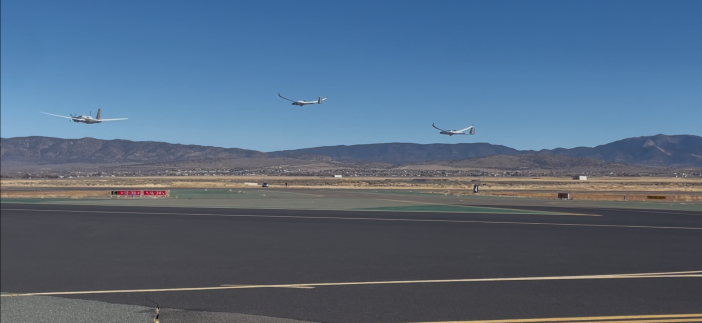World's First In-Flight Measurements of Hydrogen-Powered Contrails
Key Ideas
- Researchers conducted the first-ever in-flight measurements of contrails formed by hydrogen combustion in a project involving Airbus, Perlan team, and the German Aerospace Center (DLR) in Minden, Nevada.
- DLR instruments collected data on ice crystal formation, trace gases, and aerosols from the exhaust plume of a hydrogen-powered aircraft, aiming to understand hydrogen propulsion's potential in reducing aviation's climate impact.
- Contrails from hydrogen engines were found to form differently than conventional ones, potentially leading to fewer but larger ice crystals, which could reduce contrail lifetime and warming effects, as suggested by model simulations.
- The data collected will enable global climate impact modeling for future fleets of hydrogen-powered aircraft, with the Blue Condor project recognized as a finalist for the National Aeronautic Association’s Collier Trophy.
In a groundbreaking achievement, researchers conducted the world’s first measurements of contrails formed by a hydrogen-powered turbojet engine during flight. The project, a collaboration between Airbus, the Perlan team, and the German Aerospace Center (DLR), took place in Minden, Nevada, marking a significant milestone in aviation research. The three-week flight test campaign provided valuable insights into the climate impact of hydrogen combustion in aviation. DLR instruments collected crucial data on ice crystal formation, trace gases, and aerosols in the exhaust plume of a hydrogen-powered aircraft, shedding light on how hydrogen propulsion could mitigate aviation's climate impact.
Contrails from hydrogen engines were found to develop differently from those of conventional engines, with potential implications for contrail characteristics and their environmental effects. Model simulations indicated that hydrogen combustion might lead to the production of fewer but larger ice crystals, which could result in reduced contrail lifetime and warming effects. The comprehensive flight data gathered in this project will play a vital role in validating these simulations and understanding the complex interactions in the atmosphere.
The research involved the Blue Condor mission, utilizing a modified Arcus glider with a hydrogen-powered turbojet engine alongside a conventional kerosene engine for comparison. The tests, which included seven flights, successfully produced contrails from the hydrogen engine in four instances, enabling the measurement of microphysical properties under real atmospheric conditions.
Data collected from the DLR instruments, including sensors for ice crystals, aerosols, and trace gases, will enable researchers to model the climate impact of potential future fleets of hydrogen-powered aircraft. The project's significance was acknowledged by its recognition as a finalist for the National Aeronautic Association’s Collier Trophy, underscoring the pioneering nature of the research and its implications for the future of sustainable aviation.
Topics
Aviation
Research
Aircraft Technology
Academic Collaboration
Climate Impact
Flight Tests
Data Collection
Atmospheric Science
Latest News
